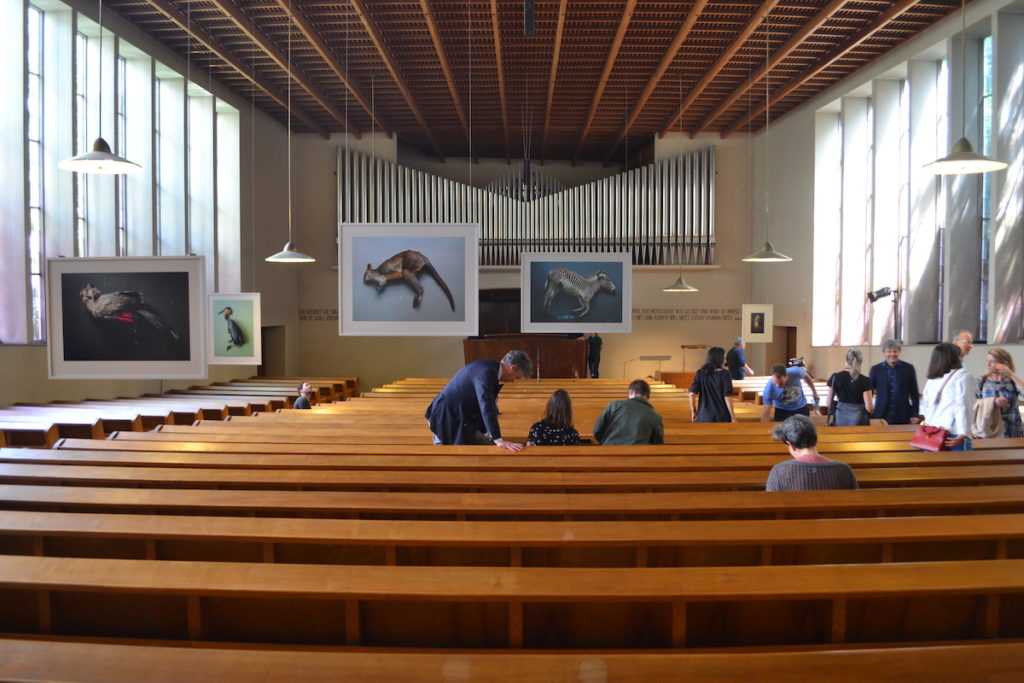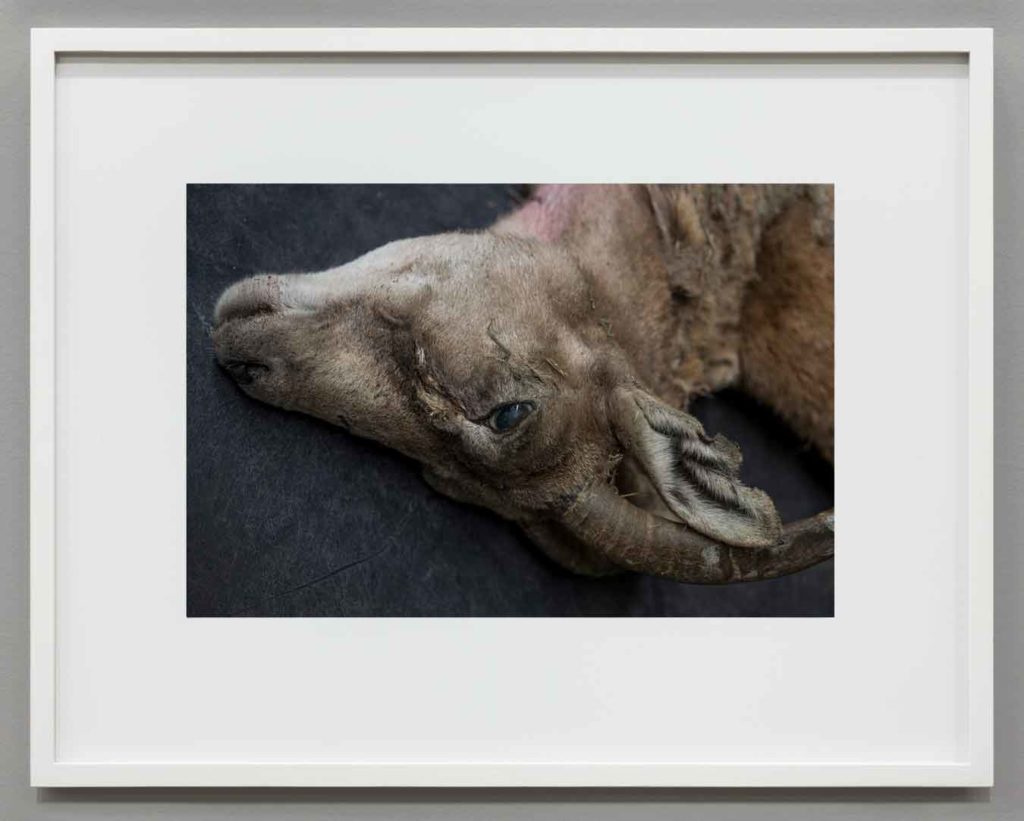[ad_1]

Installation view of “Thomas Struth: Animals,” 2018, at Basel’s First Church of Christ, Scientist.
ARTNEWS
[Follow all of ARTnews’s continuously updated coverage from in and around Art Basel 2018.]
Animals are everywhere in Basel this year. In a secluded garden along the Rhine, a Pierre Huyghe sculpture has a head made of a teeming bee colony, and over at the fair, in the booth of Berlin gallery Sandy Brown, Aude Pariset is showing three beds, each being slowly eaten by a different type of worm. On the non-living end of the spectrum, Bruce Nauman has on view at the Schaulager a recently completed hanging piece called Leaping Foxes that includes polyurethane foam casts of those creatures and reindeer.
And then there is the German artist Thomas Struth’s remarkable new series of portraits, “Animals,” which are so tenderly, carefully rendered that their subjects seem to have just passed away moments before. The animals are resting on their sides, as Struth shoots them from above. In an image cropped around its upside-down head, a wild sheep stares directly at the camera with one open eye. In another, a full-figure image, a Grévy’s zebra appears to wince or grimace, as if overtaken by fear. Meanwhile, a red fox looks like it is enjoying a deep sleep. If we did not know that he made them at the Leibniz Institute for Zoological and Wildlife Research in Berlin, which dissects and studies animals that have died of natural causes, it would be easy to believe that some of them are still living.
Through Sunday, ten of those photographs are dangling from the ceiling of Basel’s First Church of Christ, Scientist (which is no longer used for religious functions), as part of Art Basel’s “Parcours” program, its public-art section. It is a moving, almost otherworldly display—these preternaturally vivid depictions of creatures that were once in the world, now here in this spiritual setting, suspended above the pews.
With the German guitarist Frank Bungarten, Struth has organized a music program to accompany the show, and on Thursday at noon, Struth, in a dark suit and open-collar green shirt, was on hand to host an organ performance by Thierry Mechler, an organist born in nearby Mulhouse, France, who is now based in Cologne. “Today is the first day that we met,” Struth told the audience of a few dozen, including Performa founder RoseLee Goldberg and collector Eileen Cohen. “We discussed what is going to happen here over the phone so I am super excited.”

Thomas Struth, Kreishornschaf (Ovisvigneicycloceros), LeibnizIZW, Berlin, 2016
“Just to give you an idea about the program,” said Struth, “he will improvise the ten sections”—an on-the-spot solo for each animal. “We first thought to show which one is which, but maybe we leave that to the imagination.” He walked to a nearby pew and then quickly added, “Oh, and cellphones please off!”
And then Mechler got to work at his organ, beneath a quotation emblazoned on the wall of the 1935 church from the founder of Christian Science, Mary Baker Eddy: DIVINE LOVE ALWAYS HAS MET AND ALWAYS WILL MEET EVERY HUMAN NEED, and beneath the instrument’s pipes, which fill nearly the entire upper section of the front wall of the room.
He laid down spectral drones, and then launched into rough-and-tumble staccato chromatic passages, going wild but never losing control. At other times, he veered a bit more closely to traditional church voluntaries, though always pulling back from any easy beauty. It was virtuosic, idiosyncratic playing—glimmers of ethereal, hard-won harmonies at rare times shining through venturesome atonalism.
One could make guesses about which improvisation corresponded to which photograph—perhaps that quiet but intricate piece was for the leopard cat, perhaps that ferociously loud, chord-filled one was the zebra—but that seemed beside the point. Each of the improvisations was intensely different in structure and shape, while still sharing a certain ineffable logic. Over the course of about 45 minutes, Mechler was memorializing and celebrating these animals in total, building a whole world inside the church’s walls in the process.
A short excerpt of the performance is below, and additional video is available through Art Basel. Other performances will occur on Saturday, June 15—Marian Goodman Gallery, which represents Spruth, has the details.
[ad_2]
Source link

